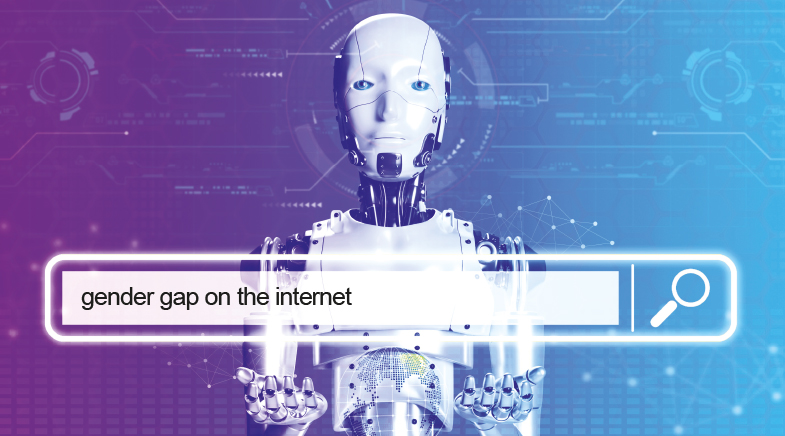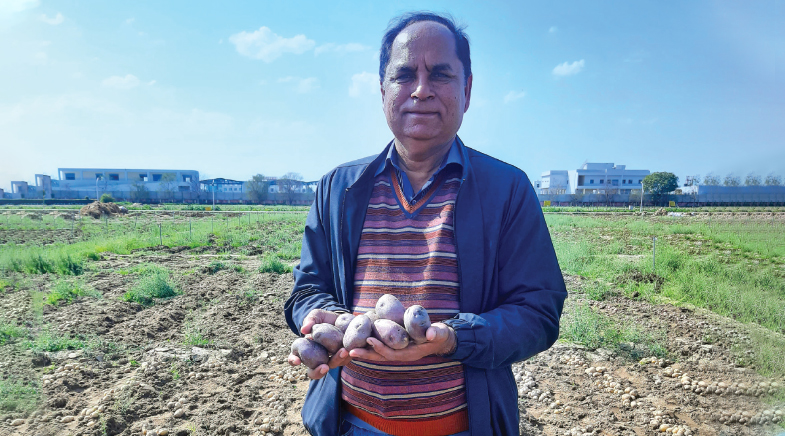Small, large and brainy
-
- from Shaastra :: vol 03 issue 03 :: Apr 2024

Ideas that power sectors, cool areas and relieve pain.
Albatross Energetics
Founders: Sudarsan M.S. and Srihari Balaji
Year: 2021
Big idea: To develop a desiccant-based — and energy-efficient — air-conditioning system for industrial spaces
Sudarsan M.S. and Srihari Balaji were pursuing research projects at the Centre for Innovation (CFI) of the Indian Institute of Technology (IIT) Madras in 2019 when they started working together. Air conditioning was an area of common interest, as Sudarsan was dealing with fluid science, and Srihari with thermal engineering. "Air conditioning is one area where there's a lot of thermal and fluid (sciences involved)," Sudarsan says. After collaborating on various projects, they ended up with a technology they believed could impact the air-conditioning sector. That led them to co-found Albatross Energetics in 2021.

Named after the albatross, an energy-efficient bird, the start-up seeks to bring energy efficiency to air conditioning by using liquid desiccants. "A desiccant is something that absorbs moisture from the air, like the silica gel sachets that come with shoes," says Co-founder and Chief Technical Officer Srihari. Unlike conventional air conditioners, where a refrigerant flowing through the cooling coil removes both heat and moisture from the air, the technology developed by Albatross independently controls heat and humidity, lowering power consumption. "Air loses humidity to the desiccant and heat to the refrigerant," says Co-founder and Chief Executive Officer Sudarsan. This configuration of the desiccant-based technology is called Active Liquid Desiccant Dehumidification.
The start-up has another configuration in line – Integrated Active Passive Cooling. This uses evaporative cooling for part of the heat removal along with the desiccant for tackling humidity. "We use the refrigerant to only cool the liquid desiccant — and not the air," Sudarsan explains. "To cool the air, we use evaporative cooling. So, that becomes a hybrid system... The amount of refrigerant in the system also goes down drastically."
In a trial at IIT Bombay, where it was incubated, the start-up has developed and tested a prototype of the first configuration with a 2-ton capacity, resulting in energy savings of 25-30% over conventional vapour-compression refrigeration systems. A 5-ton unit is currently undergoing trials; plans are afoot to scale this up to 20 tons. The final product is meant for big industrial spaces such as warehouses, and food, pharma and chemical production facilities requiring humidity control.
The start-up is also looking to air-condition enclosed spaces with a large number of occupants, such as hospitals and hotels. Instead of recirculating indoor air as air conditioners do, it offers a system called Fresh Air Handling Unit. This brings outdoor air into the building through a duct, Sudarsan says. The humidity load in the outdoor air "will be taken care of by our system, and it will supply fresh air into the building".
- Richa Malhotra
NabhDrishti Aerospace
Founders: Rohit Chouhan and Arjun Srivatsa
Year: 2023
Big idea: Developing indigenous micro gas turbines for different applications

The idea to develop an indigenous micro gas turbine took shape when Rohit Chouhan and Arjun Srivatsa were working together at GE and Rolls-Royce. With years of experience in the gas turbine industry, they were convinced that it could be used in diverse sectors in India, which relies on imported technology for gas turbines. It helped that Chouhan's background was in turbomachinery, and Srivatsa's in combustion.
A micro gas turbine is a compact power-generation device that converts fuel into mechanical energy, using combustion. It consists of a compressor, combustion chamber and turbine, all integrated into a small unit. Air is compressed and mixed with fuel in the combustion chamber, where it ignites, producing hot gases that drive the turbine. Micro gas turbine engines are technically the most complicated machines to build, says Srivatsa, who did his Master's from the Indian Institute of Science (IISc).
Chouhan, who joined the Defence Research and Development Organisation (DRDO) after an MTech from IIT Delhi, and Srivatsa felt they could develop a turbine in India given the expertise available. The turbine would also cost a lot less than imported ones. "Our product will be based on using sustainable fuels, green hydrogen. We can improve efficiency by 15%," Srivatsa says.
Their company NabhDrishti Aerospace, set up in 2023, is incubated at IISc. The conceptual design has been finalised, and the detailed design and combustion tests are to follow. The founders plan to conduct a full engine test in September 2025, followed by a commercial launch for the power generation industry.
These machines with reliable and low-emission energy solutions are efficient and versatile. They can be used across disparate industries such as oil and gas, telecommunications, marine propulsion, aviation and, critically, in the defence sector — to power crewless aerial vehicles and in the country's missile programme. The Defence Ministry is keen that India indigenise its gas turbines.
Srivatsa explains that these are turbines with 350-1,000 shaft horsepower, which will be about 1/50th the thrust of the Kaveri engine, being developed by the DRDO for the light combat aircraft Tejas. It can lift 2,000 kg, that is, four- and six-seater planes, small helicopters and missiles. The micro gas turbines can generate 275 kW of power and can be used in back-up power generation, including in oil rigs.
- N. Ramakrishnan
BramhAnsh Technologies Pvt. Ltd.
Founders: Jaideep Tiwari and Kartik K.
Year: 2018
Big idea: Building neuro-modulation wearable devices

Founders Kartik K. (left) and Jaideep Tiwari of BramhAnsh Technologies.
As a student, Jaideep Tiwari suffered from anxiety disorders, especially when he was studying Electronics and Telecommunication Engineering at the Shri Shankaracharya Technical Campus in Bhilai. This personal experience, coupled with his interest in technology, particularly on ways to leverage the power of the brain, made him team up with his batchmate Kartik K. to work on a neuro-modulation device that could help people deal with anxiety attacks and migraines.
With this aim, they founded BramhAnsh Technologies, which was incubated at the Society for Innovation and Entrepreneurship at IIT Bombay. They developed a prototype of a product that could stimulate the trigeminal nerve in the brain, which would help alter the brain's activity. With grants given by the Government of India, they were able to carry out research on their product and come up with the prototype.
Tiwari recalls that as a student he was on medication, but soon found that the dosage amounts had to be regularly calibrated and the effects of the drug wore off. So, he stopped looking at pharmacological solutions and discussed his problem with people who had similar issues. He then discovered there were neuro-modulation devices that could help stimulate the brain for relaxation. He and Kartik started working on developing one such device that would cost one-third of the foreign products available in the market.

A wearable device to ease migraines
During human trials, they discovered that those who suffered headaches got substantial relief with their device, once placed on the head for 20 minutes or so. This prompted them to work on developing the device for migraine relief. In February 2023, they launched their first product — Migraelief, a patented and clinically validated wearable device for migraine relief. They say that another of their devices, called Soonyam, senses mind activity from the tip of a user's fingers. Worn on two fingers, the device tracks key vitals of mental health with the help of a sensor.
According to Tiwari, they took almost four-and-a-half years to come out with Migraelief, as developing the technology and obtaining patents took time. The device is non-invasive and comes in the 'therapeutic class', because of which it does not need a prescription.
Neuro-modulation, according to him, involves targeting specific nerves in the brain that are responsible for causing migraines. Some other nerves, once stimulated, can help modulate the activity of the brain. There are different methods of stimulating the brain, such as using electric currents, magnetic fields and sound waves. BramhAnsh uses a patented transducer technology to send sound waves to the nerves and help the brain relax, he says.
- N. Ramakrishnan
Have a
story idea?
Tell us.
Do you have a recent research paper or an idea for a science/technology-themed article that you'd like to tell us about?
GET IN TOUCH














